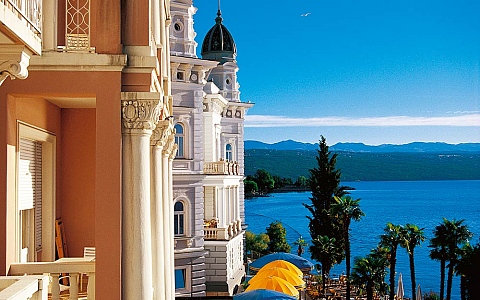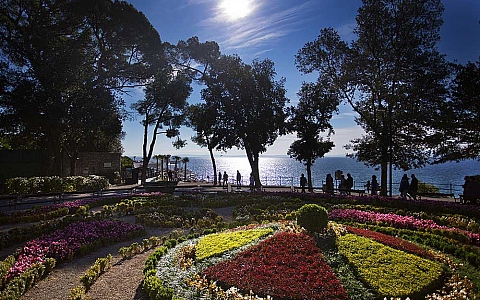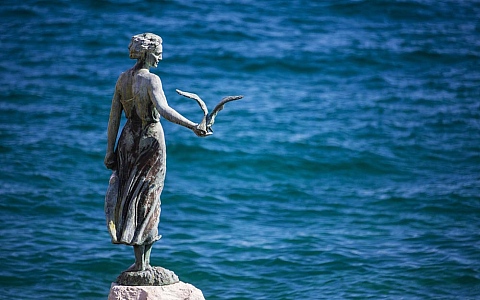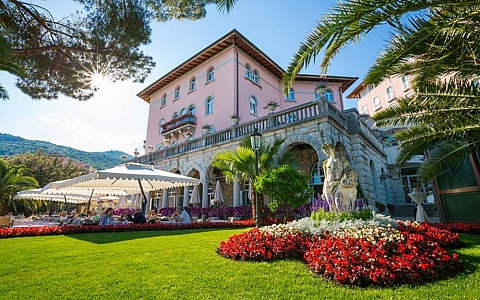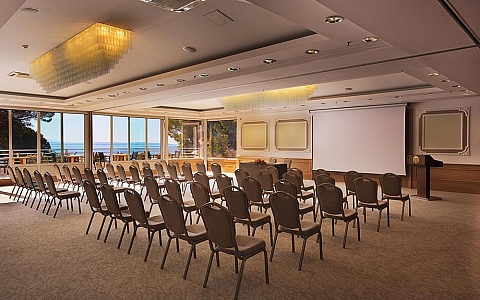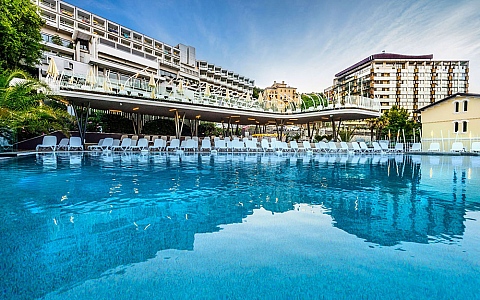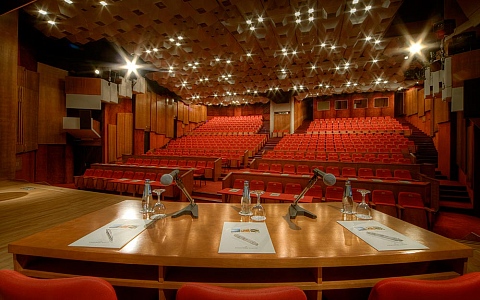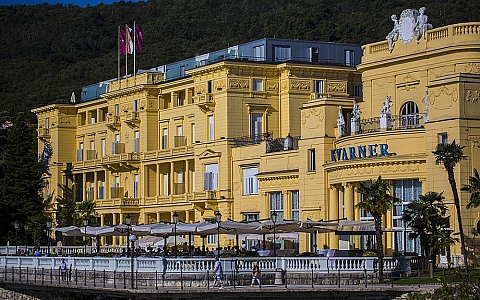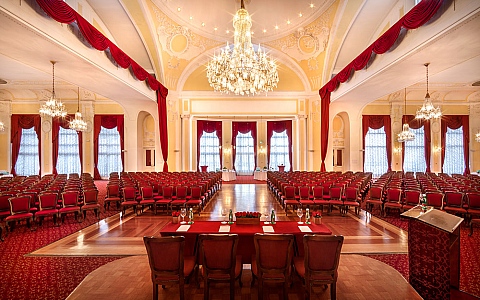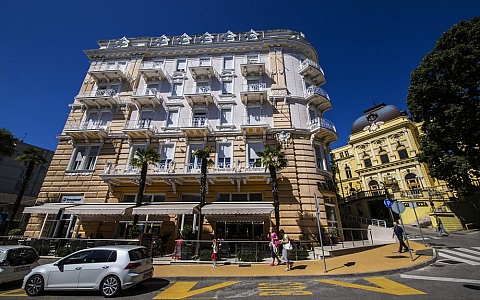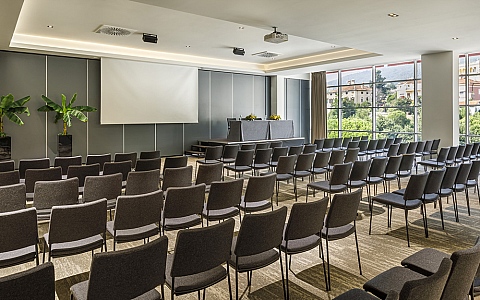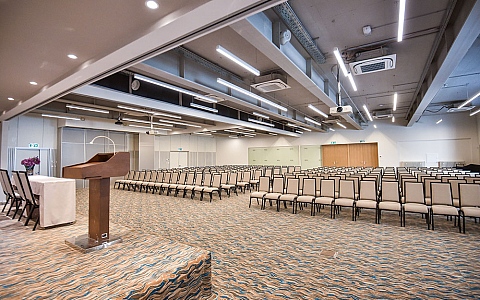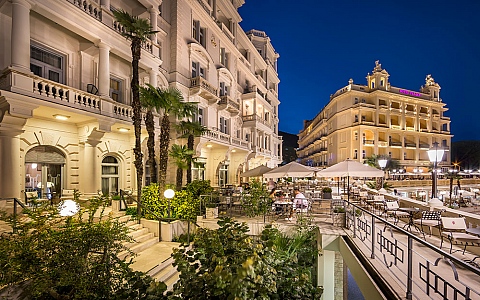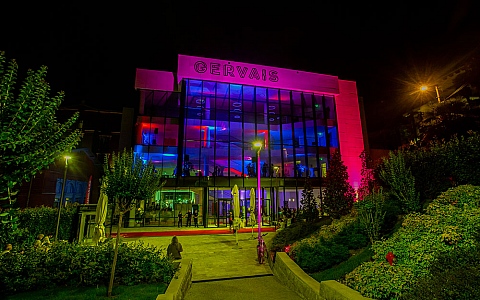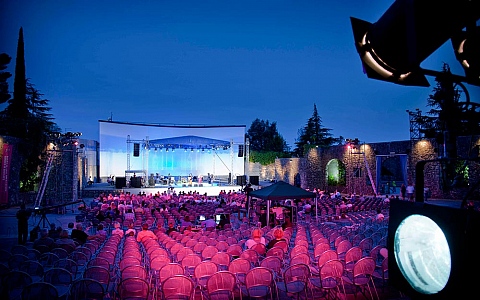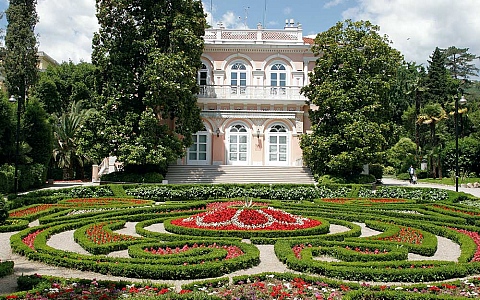Villa Angiolina
This is the building that certainly marked the beginning of the tourist epoch in the history of Opatija. Pending its building in 1844 (actually a reconstruction of an older building owned by baron Haller von Hallerxtein), Opatija was relatively large settlement with about 120 houses, clustered mainly around plots further away from the sea coast and chiefly oriented towards fishing and seafaring. With the arrival of Iginio Scarpa, a patrician from Rijeka, and building of his summer house Angiolina (named after Scarpa’s then already deceased wife, originating from the Sartori family), Opatija opened her doors to a whole line of guests and passengers, among whom it is noteworthy to mention the Austrian empress Mary Ann, the botanist Heinrich Noë, the Croatian ban Josip Jelačić and others who in their enthusiasm for the local vegetation and climate spread the fame about Opatija and thus prepared the ground for the future health resort.
Saint James’s Church
Most probably built in 1420, as a colony of Benedictine refugees from the Friulian monastery of Saint Peter in Rožac (San Pietro di Rosazzo), the entire settlement will later be named after this abbey. Today very little has been preserved of its original appearance: in 1506 abbot Šimun built or reconstructed the church, according to the inscription above the portal; near the end of the 18th century the church was thoroughly renovated, and in 1930 it was considerably expanded. Among its attraction, it houses a replica of one of Mestrović’s relievos.
Maiden with a seagull
Recognizable symbol of the town and one of most photographed sculptures in Croatia. Elegantly standing on the reef beside Lungomare promenade, it intrigues all passengers with her interesting story. Before in its place stood the statue “Madonna del Mare”, which was erected to keep vigil over the soul of count Arthur Kesselstadt, who vanished, not far off from that promontory swallowed by the pre-Easter waves in 1891. The original statue is placed in Croatian Museum of Tourism in Villa Angiolina, and a gilded variant of the Madonna can be seen in front of Saint James church.
Hotel Kvarner
The oldest hotel on the east coast of Adriatic was opened in 1884 as the first luxury property in Opatija. Initially it was designed as a sanatorium for pulmonary diseases for nobility and royal family members. After the spa was destroyed by fire, in 1913 beautiful Crystal Ballroom was built and from then it became one of the most famous locations in town. Decorated with beautiful crystal chandeliers, the Ballroom hosts numerous cultural and entertainment events, and various celebrations.
Lungomare (Franz Joseph I Promenade)
Between lush parks and magnificent villas on the one side, and foaming waves on the other, lies the Lungomare, one of the best-known attractions of the Opatija Riviera. This twelve-kilometre-long, hundred-year-old seafront promenade runs along the coast from Volosko past Opatija all the way to Lovran. Shaded by laurel and holm oak, the Lungomare offers the perfect opportunity to become acquainted with the local history or see first-hand some of the cultural monuments, such as the birthplace of the scientist Andrija Mohorovičić in Volosko or the Girl with the Seagull statue, a symbol of Opatija
Park Angiolina and St. James Park
The central park of Opatija is a horticultural monument at the area of 3.64 hectares. It is divided into 60 fields with 150 plant species. Many of them originated in the distant locations and are not typical for this climate. There is information in historic documents which testify the design of the park in the period from 1845 to 1860, in the vicinity of Villa Angiolina, which was the property of Iginio Scarpa, a great nature lover. In that part there are many plants which were brought from Japan, China, South America, Australia and other parts of the world. Among the interesting species there is the Japanese camellia (Camellia japonica), which has with time become the renowned symbol of Opatija. Today the park is divided into two units, one near the church - St. James Park and the other near Villa Angiolina - Park Angiolina.
Croatian Museum of Tourism
The Croatian Museum of Tourism is a specialized national museum institute founded in 2007 that collects, preserves, researches and presents the material and non-material heritage of a touristic content. Among the fundamental tasks of the institution is the collection of data with regard to all relevant sources and potential museum exhibits which are important for the history of Croatian tourism. The Museum disposes of two buildings: Villa Angiolina and the “Juraj Šporer” Arts Pavilion.
Učka Nature Park
Opatija's hinterland is the perfect place for nature lovers and fans of outdoor activities, but also those interested in learning more about the local history and cultural heritage. The villages in the surrounding area have fascinating stories from the past, and the magnificent Mount Učka, protected as a nature park, ascends directly from the coast to a height of 1,401 metres above sea level and is a great challenge for hikers and mountain bikers alike.
Within only a couple of hours, any one of the park’s numerous hiking trails will take you from the picturesque Mediterranean architecture of the coastal cities through the wooded slopes of Učka mountain up to its highest peak, Vojak, at a height of 1,401 meters. At the summit, a belvedere in the form of a medieval tower offers breathtaking view in all directions: the Istrian peninsula, the islands of the northern Adriatic, the mountains of Gorski Kotar, Venice, the Italian Alps...
View other attractions in Opatija here
